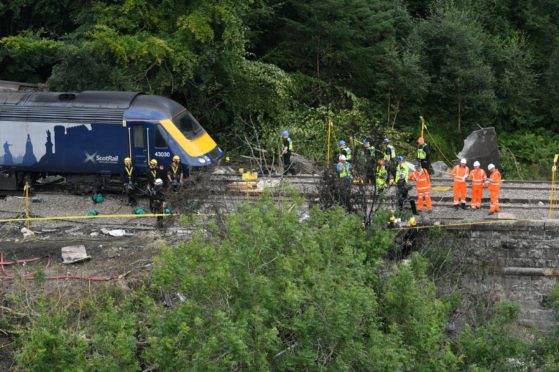A rail safety expert has insisted travelling by train is the safest mode of transport – despite this week’s fatal derailment in the north-east.
Three people – the driver, conductor and one passenger – died when the ScotRail service struck a landslide at Carmont, near Stonehaven.
A probe has been launched into the tragic incident and the Rail Accident Investigation Branch (RAIB) has presented its initial findings.
In spite of the crash, Ali Chegini, director of system safety and health at the Rail Safety and Standards Board (RSSB), said such incidents are rare – and insisted it remains among the safest modes of transport.
He said: “We know that on the whole, the UK’s railway is one of the safest in the world and in the top two or three in Europe. Accidents such as this, particularly involving fatalities, are extremely rare. The last was back in 2007 in Cumbria.
“It’s very rare for a train to come off the rails, and that’s off the back of many years of the industry working hard to manage that risk far better.
“However, unless you have unlimited resources at your disposal, it’s very difficult to eliminate all risks. Companies often have to make a choice between improving level crossings, preventing trespassing on the railway or preventing this type of serious accident.”
He added: “Despite this tragic event, rail is still by far the least dangerous mode of travel we have at our disposal, taking into account all the hazards we may be exposed to during day-to-day travel.
“It is an awful event and will have a significant impact on the community, but people should be aware that rail continues to be a very safe mode of travel.
“It is staffed by people who care passionately about safety. The last thing they would ever want to see is this type of incident.
“People are working extremely hard to make sure things like this don’t happen again.”
